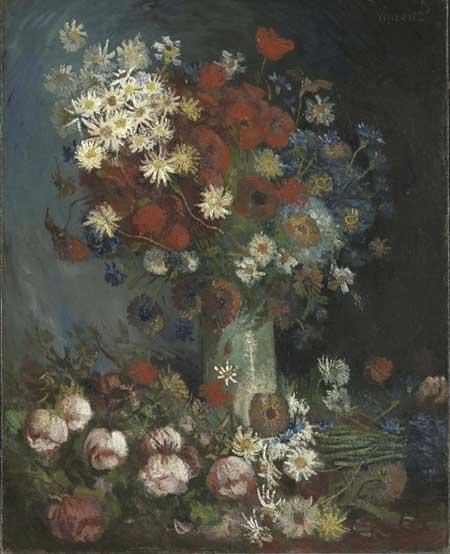| Videos | ? Latest |
|
? Feature | ? Sports | ? Your Videos |
New Van Gogh painting confirmed

 0 Comment(s)
0 Comment(s) Print
Print E-mail CNTV, March 22, 2012
E-mail CNTV, March 22, 2012
Researchers in the Netherlands say they've proved beyond doubt that a long-disputed painting is by none other than classic Dutch artist, Vincent Van Gogh. Experts have argued for decades over the painting's authenticity, with the doubts leading to it being credited to an anonymous artist. Let's find out what's made the experts so sure they've uncovered a classic this time around.
 |
|
The painting "Still Life with Meadow Flowers and Roses" by Vincent Van Gogh is pictured in this undated handout photo. Dutch museum Kroller-Muller said on Tuesday March 20, 2012 it has finally been able to attribute an anonymous painting in its collection to 19th century post-Impressionist Vincent Van Gogh. |
The Kroeller-Mueller Museum in central Netherlands bought the painting in 1974, as a Van Gogh.
It was thought to date from the late 19th century.
But experts began to question its authenticity, saying the canvas was too large for the period, and the depiction of flowers too exuberant. They also said the signature wasn't in Van Gogh's normal position.
With the doubts piling up, the museum decided to attribute the painting to an anonymous artist in 2003. But the detective work continued.
An X-ray taken five years earlier had already revealed an indistinct image of wrestlers - an image Van Gogh is known to have painted.
|
|
|
The painting "Still Life with Meadow Flowers and Roses" by Vincent Van Gogh is pictured in this undated handout photo. Dutch museum Kroller-Muller said on Tuesday March 20, 2012 it has finally been able to attribute an anonymous painting in its collection to 19th century post-Impressionist Vincent Van Gogh. |
Now, a new, more detailed X-ray has shown the wrestlers in more detail, along with the brush strokes and pigments used.
All the techniques point to Van Gogh.
Joris Dik, professor of Delft Univ. of Technology, said, "What we know is that Van Gogh frequently recycled his own paintings. He painted on top of his canvases quite a lot and in this case we were able to visualise a hidden painting that directly relates to one of his letters in which he describes the hidden composition in quite great detail. And that was a sort of a smoking gun type of evidence for the attribution of the painting."
Letters show that Van Gogh wrote to his brother about needing the large canvas, new brushes and paint.
A week later Van Gogh wrote again, saying he was delighted with his painting of two wrestlers.
The hidden wrestlers also help explain the exuberance of the flowers -- the painter had to cover up all of the old image with strong color, in order to create the new work.






